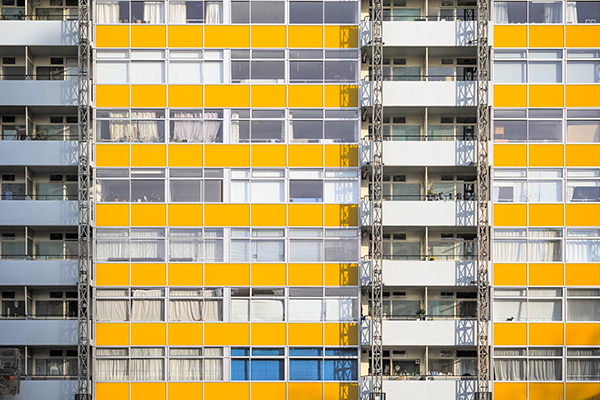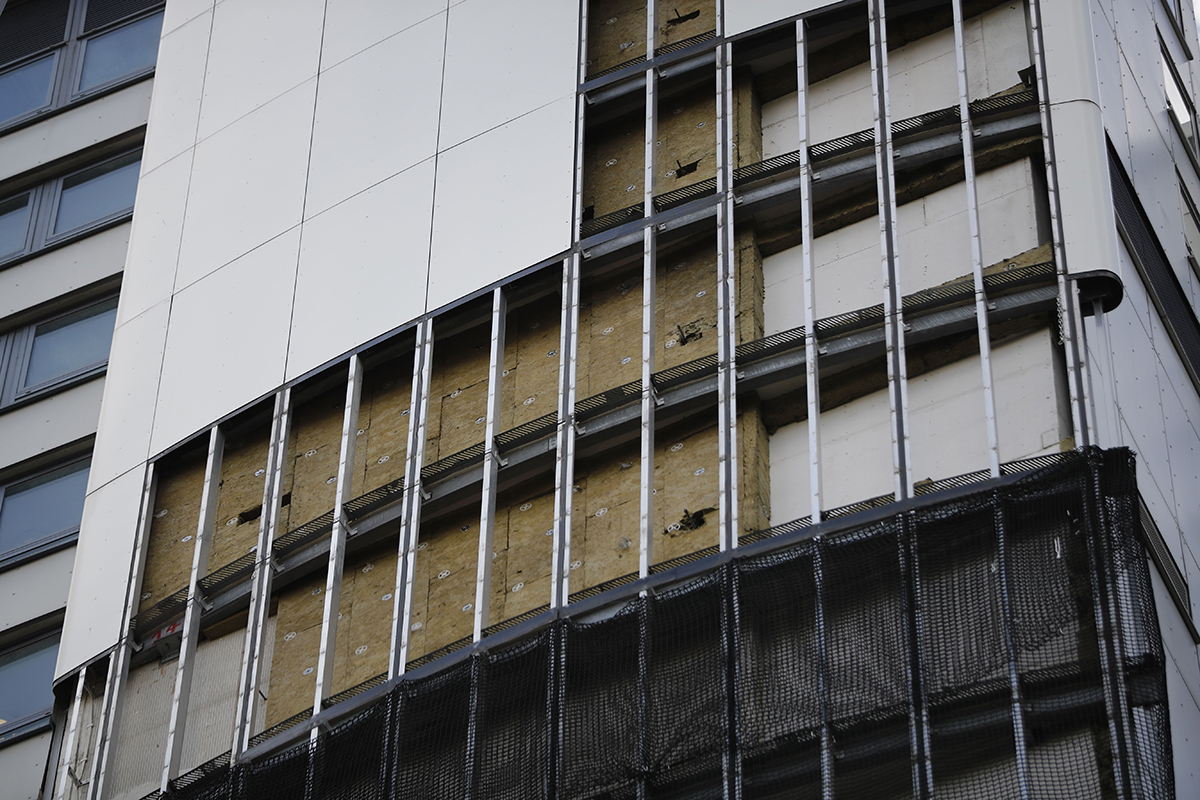You are viewing 1 of your 1 free articles
Government cladding tests did not register heat failure despite flame spread
Official government fire safety tests did not record high enough temperatures to fail, despite fire spreading all the way up a model wall.
Inside Housing analysis of data in the government’s cladding test reports has shown that in two cases, ‘thermocouples’ used to measure heat would have registered passes if flames had not reached the top of the wall.
The failure based on the fire spread clearly demonstrates that the system is unsafe for use on high rises, regardless of the thermocouple data.
However, it follows criticism from a manufacturer of non-combustible insulation that the positioning of the thermocouples would have protected them from the heat and flame.
The government tested seven different cladding systems after the Grenfell Tower fire, setting ablaze nine-metre high model walls to test their reaction. Four of these failed. Of those four, two would have passed if judged by data from thermocouples alone.
A spokesperson for insulation company Rockwool told Inside Housing: “[British Standard] 8414 testing allows for whoever designs the test to decide where to place the fire barriers. In the government tests, the fire barriers were placed below the thermocouples.
“Configured this way, the fire barriers will protect the thermocouples from the flames and heat, which can delay the temperature increase readings. In short, putting the fire barriers below the thermocouples can influence the test results, making it easier for a given façade configuration to pass.”
The tests were designed by Booth Muirie, a subsidiary of Kingspan Insulation, Rockwool’s rival. It followed the design of a previous test, over which Booth Muirie had no control.
There are two ways a so-called British Standard 8414 test can be declared a failure: if fire spreads to the top of the wall within 30 minutes, or if the temperature goes above 600 degrees within 15 minutes.
Fire reached the top of the wall in the government’s third test, on aluminium composite material (ACM) cladding with a fire-retardant core combined with polyisocyanurate (PIR) insulation, and in the government’s seventh test, on ACM with a fire-retardant core combined with phenolic foam insulation."
The thermocouples, however, did not record a failed temperature. In both cases, the temperature rose above 600 degrees after the 15-minute time limit had passed.
This information was made public in the government’s test reports last summer but the government has not made mention of it at any point.
A Kingspan spokesperson told Inside Housing the tests “applied the same design template for the positioning of fire barriers and thermocouples as a previous test (in which neither [the government] nor any Kingspan company had any involvement) which was conducted in October 2016”.
A spokesperson for the Building Research Establishment where the test was carried out added: "The failure criteria are very clear and unambiguous. A system either passes or fails the test – there is no qualification of this.











